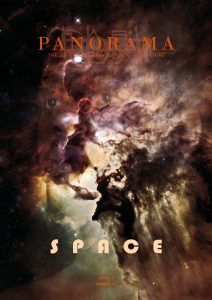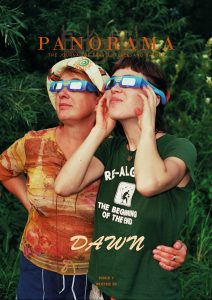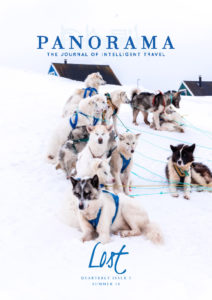
In 2014, I started my life over by returning to San Diego, the Californian city on the Pacific Ocean. It’s a city I have claimed as home, even though landlocked New Delhi will always be mine. Less than six miles east of the beaches of San Diego is a eucalyptus forest that still holds wildlife as well as humans. Rancho Santa Fe — the ranch of holy faith. That’s the forest I pick to hide.
In 2014, over 214 days after my now-ex stops talking to me, all I want to do is start anew. Start where no one knows me and I don’t know them. In an affluent neighbourhood that no one will expect me to be. Not him. Not his parents or siblings. Not even the friends we knew for the two decades we were together. I chance upon a cottage behind a mansion near a horse trail. Surrounded by eucalyptus trees. Hidden. This will do.
Rancho Santa Fe elicits a reaction of “wow!” or “why do you want to be among self-centred billionaires?” so I stop telling people where I live within a month of moving into the cottage. I sound pretentious when I say I live in the ranch — me, an immigrant who moved here for graduate school in molecular biology. How dare I say I live where the billionaires settle down after earning their fortunes? I don’t deserve to. So I deflect those questions by saying, “I live four miles from the ocean. I like the rural feel of the dry brush and the snorts of horses in stables across my backyard.” Which is true. And it isn’t. I don’t see people in Rancho Santa Fe at all. My mostly-absent-landlord’s neglected Dalmatian adopts me, staring soulfully through incongruous French doors until I open them for her. On Sundays, she strides in with obvious ownership, climbing into my bed for a lazy snuggle. But all I’m trying to do, as the legal machinery slowly churns out the paperwork to end my marriage, is stay alive. All I’m trying to do is live, one day at a time. Living in a rental cottage tucked within a eucalyptus forest, away from prying eyes. Watching a life I had so lovingly gathered together, crumble like the sandy bluffs four miles from me.
I’m a landlocked New Delhi native. But my love for America’s Finest City never fails to amaze my friends. After all, New Delhi is more like Washington DC, with policy wonks, old British architecture, and government buildings. But home for me has been the dry coastal city, a place that’s golden, where the sun shines, and fires, fanned by Santa Ana winds very similar to the dry desert air in Delhi, race every few years through canyons like amber-spitting dragons.
Friends also ask me, “What’s there to hide? It’s not like you stopped talking to him. He did. It’s his problem, his abuse.”
To that I explain, “I don’t want to be talked out of ending the last two decades of abuse.” That usually silences them when I finally call it for what it is, narcissistic abuse.
This wasn’t a conscious choice. I was only looking for a rental that was safe, secure, and away from prying eyes.
In 1906, the Santa Fe Railway purchased an entire California land grant to start a blue gum eucalyptus tree plantation to be used for building railroad tracks. The soft wood, however, was not suitable to hold the metal spikes. Rancho Santa Fe then was developed into a community of wealthy country estates. Starting in 1921, architect Lilian Rice worked for six years to construct the village centre, the Inn at Rancho, and a few now-heritage protected homes in the village — homes of tech billionaires, old money business, horse ranchers, and thoroughbred owners.
The first few nights in the Spanish cottage are spent staying awake. I realise I am a city person — forest-living is for the strong hearted. The noises are foreign: the sudden scurry of a field rodent, the snort of a horse across the field, a coyote howling his location to his family. There are no people. The night is dark. The stars shine like they have for ages and the animals live like they own the world.
Sometimes a fire engine races past, a few miles away in Encinitas, and the coyotes howl with the siren as it passes by. The Dalmatian in the mansion wakes up, trots down the manicured sloping lawn toward my door, howling with the coyote in solidarity.
The motion sensors light up the gravel in the back yard, detecting movement. Four-legged animals with busy tails scamper by, heading down to the trail leading them to the San Dieguito river stream.
I have never had a good sense of direction. I am like my Ma, now long gone, alive only in soft whispers in my mind. Ma too couldn’t get us home if our route was slightly changed from the usual. Routine and the same path was the only way we could get back home from school. I joke that GPS is my best friend, and that I was lost for nearly three decades until Apple brought me Siri. Baba, he too gone for over a decade, used to be the family guide, showing us stars and how to go north. Didi, my elder sister and I, we followed him in our Bengali Delhi neighbourhood, Chittaranjan Park streets, confident we could navigate the many blocks and rows of homes, and lanes and by-lanes, confident because he was leading us home. Now there’s no one. Didi is on the other coast, and I, am truly alone.
I have a magnet with Eleanor Roosevelt’s quote on my fridge, do one thing every day that scares you. I live in a forest, I tell the magnet each day I leave for work, and I don’t know how I’ll navigate back home tonight. That’s what scares me, Mrs. Roosevelt.
The road names like Rambla de las Flores (esplanade of the flowers), Paseo Delicias (the delightful walk), Via de Fortuna (the road of fortune) are Spanish and are as winding as the rolling ‘r’s that pepper each pronunciation. The neighbourhood came from Mexico, and each street has a descriptor of lyrical Spanish words, a paradise within paradise, six miles from the Pacific Ocean.
The first month it gets dark early, still winter. I pray to my Catholic gods, having studied with nuns all my life, me the agnostic. I ask that I reach home tonight. The irony — that I chose the forest for shelter — isn’t hidden from me. But I am here. This is the beginning of the rest of my life. I get into my old, tired car, set my GPS on, heading to the forest as sunlight quickly transforms into ink-darkness.
Today my ex finds me on LinkedIn, the social media of professionals. Today my ex comes to my office, standing next to my Acura like he owns it, much like he owned me for 18 years. Today he says, “Oh, Madhu, you’ve changed so much.” Today I agree with him, even though my heart pounds as I say, “Yes, I have. I have.”
Today he accuses me, “You abandoned me when I needed you the most.”
Today I tell him, “No, it’s the other way round. But it’s your truth. You believe what you have to.”
Today he yells, “Oh, Madhu, you’ve changed so much.”
Today I agree with him and turn away.
I watch him leave, his BMW revving with his anger that now he just cannot reach me —physically, emotionally, literally. I wait, breathe, breathe and switch on the GPS. Via de Fortuna, I whisper to it. Take me home.
As every night, the moon shines brightly. By the time my breathing is normal, I am lost. I with no sense of direction, get lost in the winding roads, without street lights. Rumour has it that the billionaires forced the city not to put lights on the roads, a way to deter riff-raff from wandering the neighbourhood. The other rumour is that there are no lights since it is horse country — at night, the thoroughbreds sleep, and so the ranchers voted against bright lights.
Nightlife buzzes as I drive through; coyotes calling as always. At La Orilla, the “edge of the shore,” finches near the horse trail trill out their annoyance. At the stop sign at Granada, a sudden snort of a horse grazing in the pasture across startles me to a quick halt.
By the time I decide on a right at Los Morros, I am lost, taking a circuitous route back home. Sometimes the moonlight guides me back. Sometimes it is the stilted eucalyptus branch pointing me in the right direction.
But today, the moon guides me back and, as my breath becomes regular, I notice that even in the dark the Bougainvillea’s purple flowers gleam like bright tissue against the dark turn near Ramblas de las Flores. The dry brush shines near the white eucalyptus bark, ash-grey against the black of the night.
I turn off the GPS, something I’ve never done before. Why, I don’t know, but the night calls for this journey to be had without a guide but my breath. It’s the yipping sound of a coyote calling his family to join him that tells me I am not lost, or hidden. It is a world inside another that has found me.
“I have changed,” I whisper again, to myself, in the old car that saw me disappearing in my destroyed marriage. The old car’s springs creak in agreement, as if the tears I have cried in her have made her soggy with grief. I have changed, I tell the Acura again. She moves ahead, softly, and I trust her. I have found me.
I turn from El Camino Real, to La Orilla, through Ramblas de las Flores past La Granada, and take a sharp left to Via de Fortuna which snakes toward my cottage in the woods, next to the coyote family that walks in the horse path across every night, heading home.











